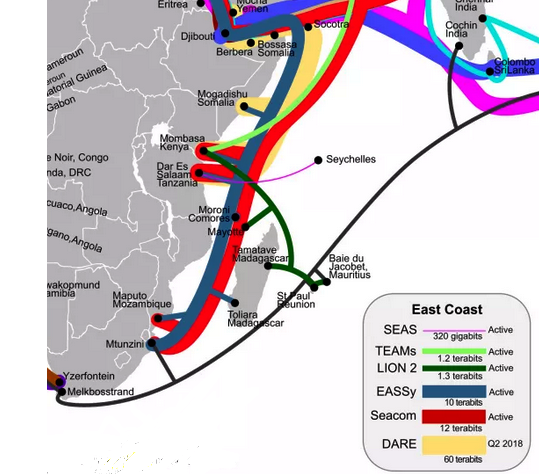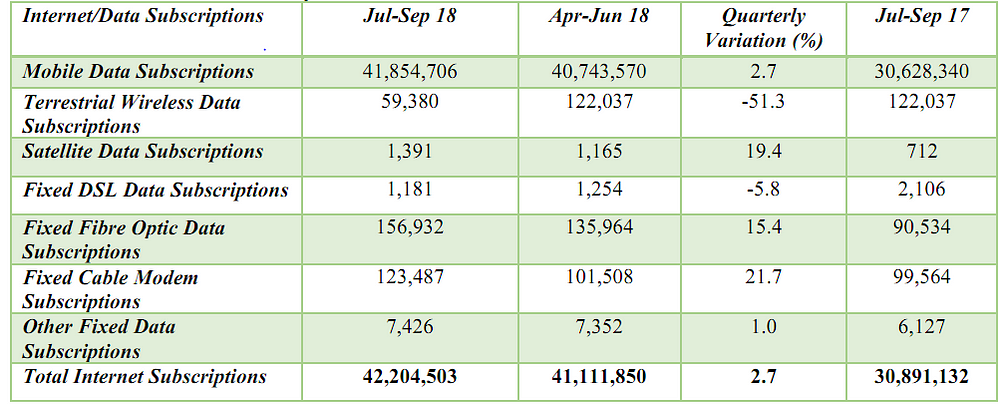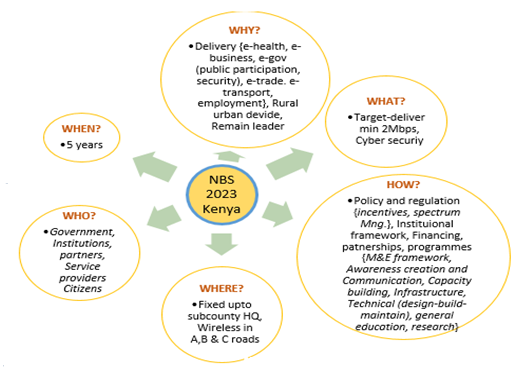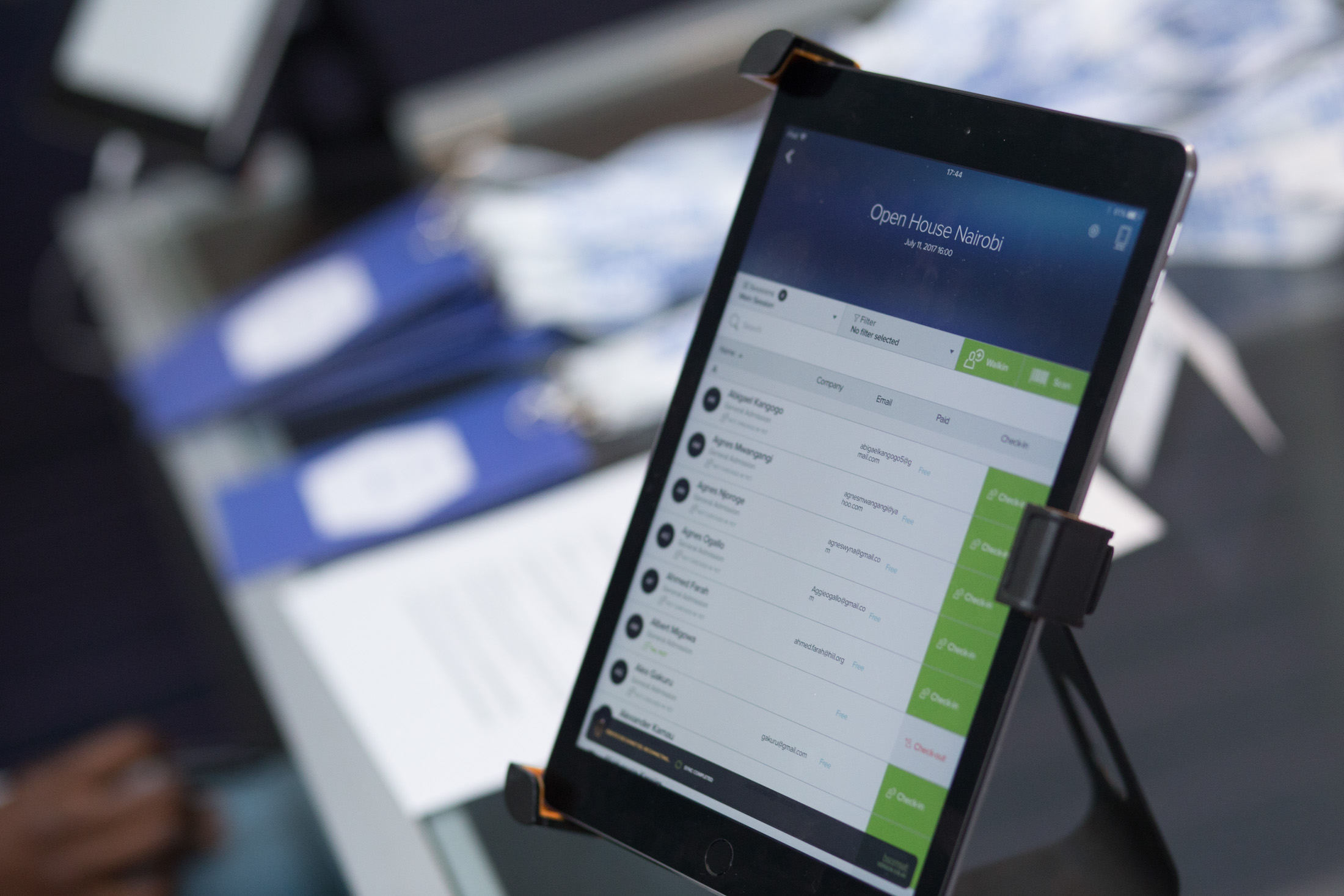A brief review of Kenya’s Broadband Strategy 2018–2023
The Internet has increasingly become a civil right as the government continues to digitalize its critical services. Every Kenyan applying for driving license, passport and filing returns will be compelled to do it online. In addition, connectivity to broadband promotes the expansion of human social and economic freedoms through online trade, social interaction and production of content. This means to remain unconnected means to be left behind in social and economic development.
The government has unveiled proposed plans to connect Kenyans to the Internet. The 2019–2023 proposed broadband strategy is a revision of the first strategy that served 2014–2017. This article will take you through the strategies through which the government plans to connect citizens to broadband, with a bit of analysis and context in the process.
Overview of Kenya’s connectivity
Kenya has around 42.2 million Internet users, against a population of 48 million (numbers provided by the Communications Authority, though not verifiable). Kenya is connected to a wide network of undersea cables. Internet penetration has grown tremendously over the years, following the entry of affordable Internet-enabled mobile phones into the market and stiff competition among the mobile and broadband service providers. However, less than a tenth of mobile subscribers in Kenya are connected to home broadband which is largely concentrated in Nairobi and its environs.


The revision of the broadband strategy was informed by the following challenges:
(i) Uneven distribution of broadband mostly concentrated in urban areas. Most part of rural Kenya is still unconnected. Even so, the broadband market has largely been driven by the private sector and has therefore left patches in the urban areas where it didn’t look profitable to invest.
(ii) The challenge of last mile connectivity.
(iii) High broadband charges in Kenya. Home broadband in Nairobi area, of 5mbps, cost an average of KES 2500. Internet services are taxed at 15%. This was a rise from 8% due to the country budget crisis experienced last year.
(iv) Lack of relevant digital content and applications to motivate the uptake of broadband, especially to citizens in rural areas. We still have limited innovative broadband services that are relevant for uptake across all socio-economic sectors to attract uptake and improve efficiency in these sectors and awareness of such services.
(v) Lack of infrastructural sharing framework and incoherent investment models, construction costs, and collaboration across the industry chain that has somewhat impeded network rollout across the country.
(vi) Insufficient levels of trust and insecurity of broadband, and lack of e-waste management plans.
The 2013 strategy had envisioned connectivity speeds of 2Mbps for the rural areas, and 5Mbps for urban Kenya. However, it is not clear how these speeds were arrived at, now that the government sees the goal as too ambitious, and stakeholders are locked in a choice impasse between 1.6Mbps and 2Mbps. Nonetheless, we should first think of the content that we want the ordinary Kenyan to produce and consume.
Here’s how it is going to be delivered.

The strategy focuses on seven thematic areas: Policy, legislation and regulation; Infrastructure and connectivity; Services, Content, and Applications; Capacity building and Innovation; Devices; Privacy and Security; Finance and investment; and the accompanying institutional framework to deliver the strategy.
Capacity building
There is a high correlation between Internet usage, levels of education and poverty. Kenya’s education levels have plummeted over the last 15 years, owed to the introduction of free primary education. We are one of the pacesetters to broadband utility in Africa and are measured with the rest globally.
To promote skills development related to the delivery of broadband services, the strategy focuses on reviving specialized institutions to support specialized skills and competencies required by the related sectors
Device Financing
The strategy plans to review Tax policies, including the exception of taxes on broadband devices to increase affordability. Specifically, it proposes zero ratings of mobile phones to increase access to the internet. The government also plans to partner with financial institutions to provide loans and innovative payment methods to increase device ownership among the citizenry. It is worth noting that during president Kibaki”s tenure ICT devices were zero-rated. And further, students were able to buy laptops at half price from government-World bank wezesha project. During this period there was massive gains in the ICT industry fueled by inclusive policy development in the sector. Perhaps we should also partner with the private sector to promote community networks and develop similar concepts such as Mkopa to connect the poor population.
Implementation
A strategy is a plan outlining the activities to be taken for the achievement of a goal. As such, a strategy document should give two things; a goal and plans to achieve the goals. The 2013 broadband strategy is one that had goals but lacked governance and administrative structures, such that the developments in Kenya’s ICT sector are not attributed to it, but to the liberalization of the market. This time, the development of the 2023 strategy was spearheaded by the ministry of ICT together with the vision 2030 board. It therefore directly links the strategy to the country’s development plans.
The 2023 strategy gives two options for implementation:
- Through coordinated government agencies like the vision 2030, the Ministry of ICT and the Communications Authority.
- Through a National Broadband Implementation Council established by an Act of Parliament.
Option 2 would be a challenge because coming up with new legislation would take at least 2 years — eating into half of the period the strategy should be implemented.
Policy, legislation and regulation
The following are the policies that the strategy will lean on:
- Kenya Information & Communication Amendment Act 2013 — provides for overall regulations of Information and Communication. The Act gives establishes the Communications Authority as a regulator.
- Access to Information Act of 2016 — Created to facilitate public access to information held by public institutions, as a way of promoting open and participatory governance.
- Computer Misuse and Cyber Crimes Act 2018 — Created to provide for offenses that relate to computer systems.
- Critical Infrastructure — was meant to protect physical and virtual assets, both public and privately owned, which are essential to the social and economic well being of Kenyans. The proposal of the draft strategy is to include broadband as critical infrastructure. However, the bill was brought up for public participation in 2015, and progress towards its approval is not known.
- ICT policy — aims to provide a framework/master-plan for ICT. It was first developed in 2006 and was set for a review in 2016 due to the rapid changes in the ICT sector. After a lot of engagement with the ICT sector, the government has also gone silent on the progress of its review.
- Data Protection Bill — is one that mirrors the GDPR. Developed to give data subjects control over their data stored by data processors. This is also pending after public input towards the end of last year. Its approval is likely to be prioritized due to lack of public support in governments digitization projects, such as the National Integrated Identification Management.
- Copyright Act — Created to promote intellectual property ownership, and
- Kenya Industrial Property Act — Created to provide for the promotion of inventive and innovative activities, to facilitate the acquisition of technology through the grant and regulation of patents, utility models, tech innovations and industrial designs.
Privacy and security
The updated strategy will include plans to ensure security and protect the privacy of users. The policy focus here is on detection and enforcement of security and data breach incidents. The government will; (i)Collaborate with National Police Service to secure BB infrastructure, (ii)Promote the establishment of Independent cyber-crime forensic organizations and, (iii) Conduct education and regular awareness programs on online privacy and security to citizens
Finance and Investment
The strategy looked at a wide array of alternatives to support broadband delivery. Funding from the national government through the treasury is the first alternative, the second one looks at the ownership of broadband infrastructure by county government, through which it provides county wholesale services to tier two service providers. Other options include public-private partnership and donor funding.
Limitations
What kind of vision do we have for broadband connectivity in the country and it’s populace? We are moving from an industrial society into more of an informed society. The broadband strategy misses talking about the development of a knowledge society, smart cities. This will need the strategy to be linked with the other ICT policy documents: ICT strategy, Cybersecurity strategy, and Cybersecurity policy. There seem to be hanging policies and multiple missing links that explain how these policy documents feed into each other. The country’s ICT master plan — on which this strategy should be anchored — was out for public participation more than a year ago, but to date, it is not known what happened to the document afterward.
The other challenge is about the strategy delivering indicators that directly relate to the ordinary citizen — citizen friendly indicators. (pick someone randomly from the street and ask them what in the strategy they care about). As such the strategy should speak to the ordinary Kenyans to the levels they are able to participate in its development.




